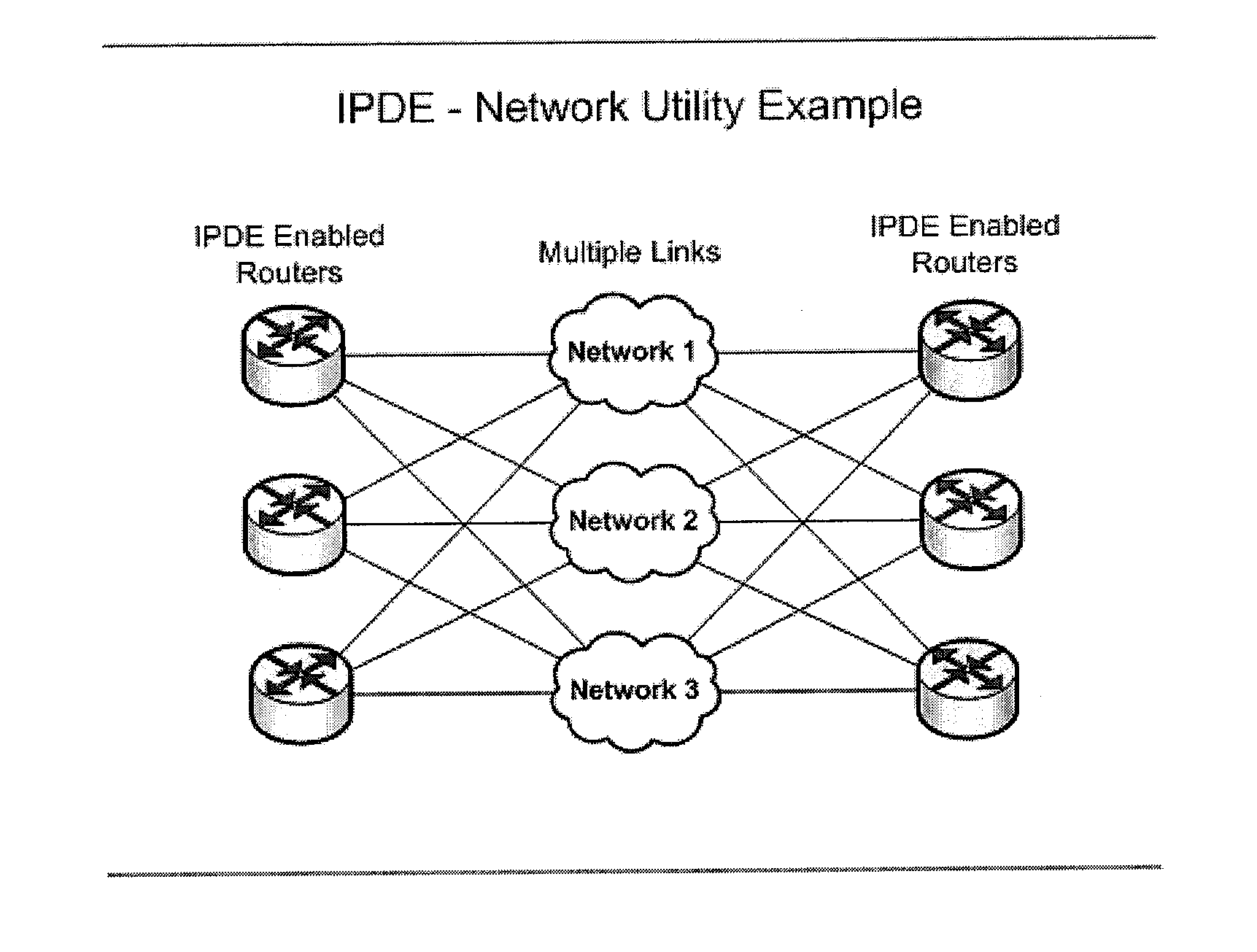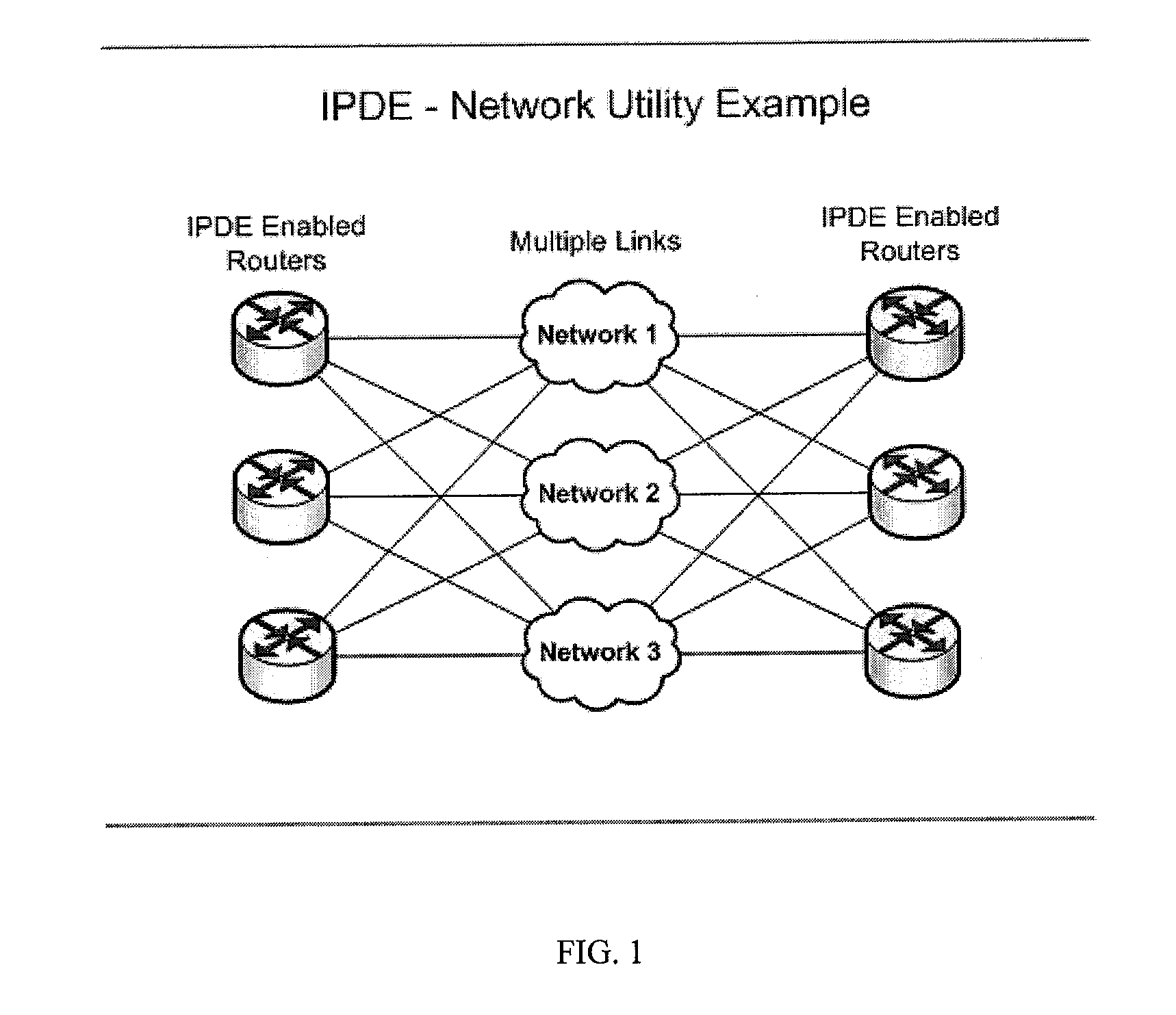System, method and computer program for intelligent packet distribution
a packet distribution and intelligent technology, applied in the field of network traffic packet distribution, can solve the problems of affecting the ability to provide a consistent, even, and optimal flow of bandwidth over multiple communication links, and affecting the performance of multiple communication links, so as to achieve the effect of leveraging the bandwidth of bonded or aggregated network connections
- Summary
- Abstract
- Description
- Claims
- Application Information
AI Technical Summary
Benefits of technology
Problems solved by technology
Method used
Image
Examples
Embodiment Construction
[0036]The present invention provides a system, method and computer program for intelligent packet distribution. The system includes an intelligent packet distribution engine (“IPDE”) for implementing an intelligent packet distribution workflow which may be implemented using an intelligent packet distribution algorithm (“IPDE distribution algorithm”). Intelligent packet distribution may be used in conjunction with techniques such as network connection aggregation for providing load balancing.
[0037]The present invention provides the ability to combine differing speed links with weighted packet distribution and with bidirectional real-time link intelligence. The IPDE is operable to collect, in real-time or near real-time (i.e. in substantially real-time), data regarding the performance of at least two network links enabling a network communication (“data traffic parameters”). The network links may be diverse bonded or aggregated network links and may exhibit substantially dissimilar pe...
PUM
 Login to View More
Login to View More Abstract
Description
Claims
Application Information
 Login to View More
Login to View More - R&D
- Intellectual Property
- Life Sciences
- Materials
- Tech Scout
- Unparalleled Data Quality
- Higher Quality Content
- 60% Fewer Hallucinations
Browse by: Latest US Patents, China's latest patents, Technical Efficacy Thesaurus, Application Domain, Technology Topic, Popular Technical Reports.
© 2025 PatSnap. All rights reserved.Legal|Privacy policy|Modern Slavery Act Transparency Statement|Sitemap|About US| Contact US: help@patsnap.com



